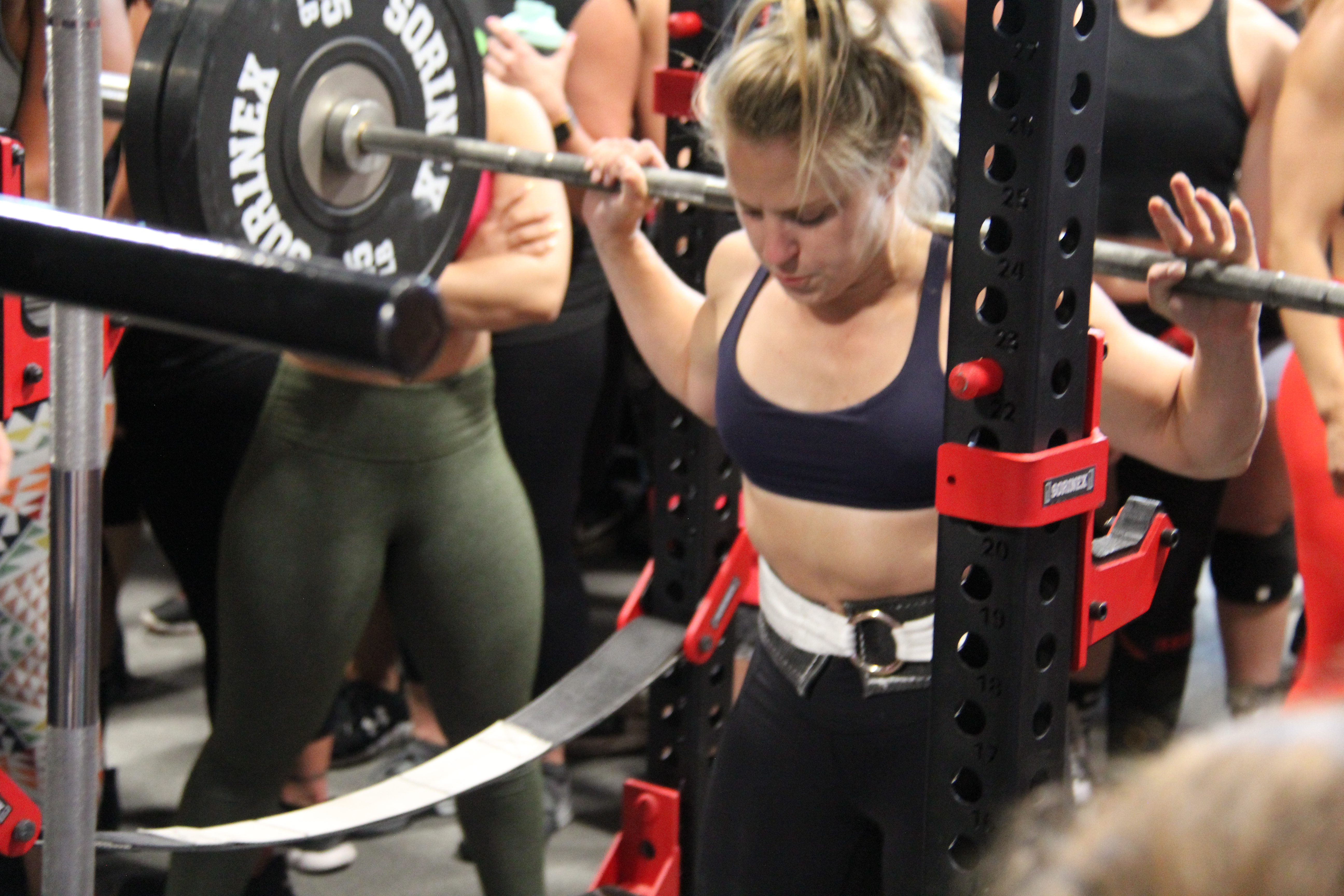Preparing Weightlifters Physically and Mentally for Nationals
Mindset | Strength & ConditioningABOUT THE AUTHOR

Whitney Rodden
Coach Rodden started out as a Softball player for MidAmerica Nazarene University (MNU) in 1997 and went on to participate in MNU’s Olympic Weightlifting Program. She graduated from MNU in 2001 with a Bachelor of Arts Degree in Athletic Training, and a Minor Degree in Psychology. In May of 2004 she graduated from Kansas State University (KSU) with a Master of Arts Degree in Education Administration and Leadership. She is a member of United States of America Weightlifting (USAW) at the Coach Level and Referee Level, a member of the National Athletic Training Association (NATA), a certified Collegiate Strength and Conditioning Coach (SCCC), and she is also a member of the National Strength and Conditioning Association (NSCA) in which she is a member and a Specialist. In July of 2005, Rodden Became the Head Strength and Conditioning Coach for MNU. She is the Strength and Conditioning Coach for Football, Men’s & Women’s Basketball, Men’s and Women’s Soccer, Volleyball, Softball, Baseball, and the Cheer Squad.
// Preparing Weightlifters Physically and Mentally for Nationals
I’ve had the privilege of coaching multiple young men and women on their path to college weightlifting nationals. While the school I serve, MidAmerica Nazarene University, is a small liberal arts institution, I like to think that we punch above our weight, and that’s certainly the case with our lifters.
While establishing consistency, avoiding injuries, and balancing load throughout the whole training year is important, the period leading up to nationals is crucial. From a physical standpoint, we need to make sure that each competitor is ready to be at their best for the meet and feels fresh when they reach the platform. That being said, we also need to be careful to not try and do too much. Sometimes coaches have their lifters max several times in the run-up to a meet, but I find it best to only do it once. So each lifter will attempt a clean and jerk max 10 days before nationals and their snatch max when we’re seven days out.
When it comes to a topic like this, tapering is always a bit controversial and everyone does it a little differently. I’ve always found that following USA Weightlifting’s linear progression standards works well for both my male and female lifters. Two to three weeks out, we’ll start backing off the volume while upping intensity. There’s a lot of heavy singles and doubles in each session, and I want the athletes pulling heavier weights than they’ll attempt in either the snatch or clean and jerk at nationals. For the singles, we’ll go as far as 90 percent of their one-rep max in each lift.
I also try to have them recreate what it feels like to get a big weight into certain positions and hold it there. For example, we do heavy jerk recoveries and stand in a front squat position with a heavy load. This way, when it comes time to do it in competition, it won’t feel like the bar is too much to handle, even if they hit PRs in both lifts (fingers crossed!).
It’s not all about putting up big totals in training. In fact, every lifter has one, two, or even three things they can improve on from a technique standpoint. I don’t want to overload them by talking too much or giving them constant corrections and cues, but I do use the warmup to help them fine tune their form so that when they get to loading the bar a bit more, they’re prepared to move well and sustainably.

Getting your mind right
The mental side of preparing athletes for nationals is just as important as getting them ready physically. My go-to technique at this point is visualization. I’ll have each athlete mentally rehearse going through their warmup and then what they’ll do once it’s their turn to take the platform. This helps them know what to expect and ensures they’ve run through some mental reps before they have to perform physical ones.
Another factor that’s easy to overlook from a psychological perspective is focal point. In other words, where the lifter is going to focus his or her attention during competition. Sometimes the platform is at floor level and in other situations it’s raised up a bit. This might not seem like it’d make a difference, but where an athlete trains their gaze is actually a big deal when the heat is on and it’s go time.
We’ll also go through their routine for the warmup room in advance. Over the years, I’ve come to realize that it takes each lifter a different amount of time to do their thing and get themselves ready to compete. Once, a male lifter missed his lift because he didn’t get the bar above his knees before the buzzer sounded. That was quite embarrassing for me, and I resolved that from that point forward, I’d pay much more attention to the finer details. So now I make sure I know exactly how far the warmup room is from the platform, the layout of the training hall, and so on. If you know all the variables, you can make sure that your lifters can go through their usual routines without being rushed, so they’re primed to perform when it really matters. You don’t want them to be thrown off by something because you haven’t done your homework.

Taming nerves
It’s quite natural for athletes to be nervous in the build up to a big meet and on the day of competition. The key is finding the right balance between them being hyped up enough to really attack the bar, and calm enough to not waste nervous energy. Back when I was competing, I was really anxious in the week before the contest, but felt fine when I walked onto the platform. For some people, it’s the other way around. So a big part of the mindset preparation is knowing the personality of each lifter and giving them the coping tools that will help them be in the right frame of mind.
One way that I help in this regard is to avoid putting undue pressure on my athletes. I’ve never been a yeller or someone who’s going to give a big Remember the Titans motivational speech. Instead, I simply remind them that they’ve put in a lot of hard work, they’ve made the lifts many times before, and that this situation is no different to what they’ve experienced in training. Basically, my message is: “You’ve got this, and I believe in you.” Everybody’s coaching and communication styles are different, but I know that many athletes put enough – and in some cases, too much – pressure on themselves, without me adding to it and making them fold mentally.

Are you a better coach after reading this?
More coaches and athletes than ever are reading the TrainHeroic blog, and it’s our mission to support them with useful training & coaching content. If you found this article useful, please take a moment to share it on social media, engage with the author, and link to this article on your own blog or any forums you post on.
Be Your Best,
TrainHeroic Content Team
HEROIC SOCIAL
HEROIC SOCIAL
TRAINING LAB
Access the latest articles, reviews, and case studies from the top strength and conditioning minds in the TH Training Lab

